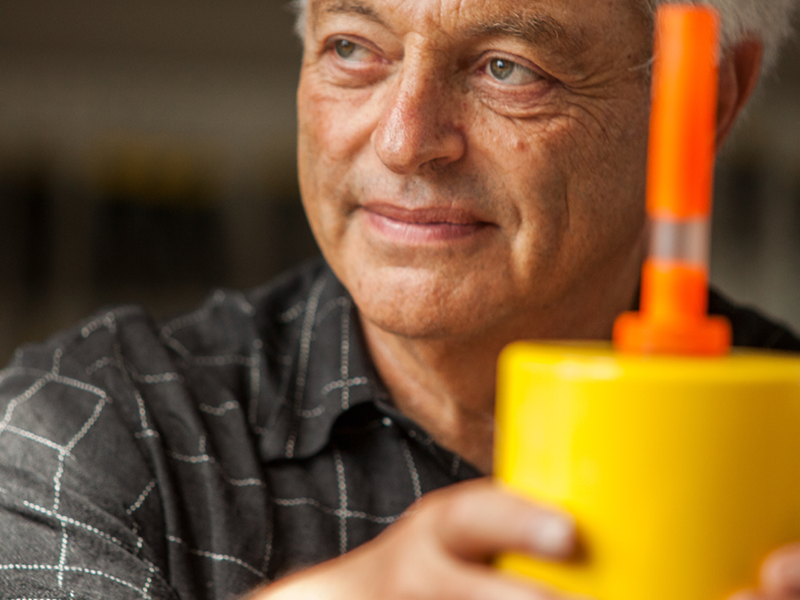MARINE PHYSICAL LABORATORY HISTORY
1940s
MPL’s roots go back to 1941 when, faced with large-scale destruction of ships by submarines in World War II, the nation mobilized the scientific community to learn how to defend against this threat. Three university-operated laboratories were thus established: Columbia University Division of War Research, Harvard Underwater Sound Laboratory, and University of California Division of War Research (UCDWR). UCDWR was led initially by Vern Knudsen of the University of California, Los Angeles, and then Gaylord P. Harnwell from the University of Pennsylvania with senior staff recruited from academic institutions across the country.
Given the primitive initial knowledge of the ocean, and of the technology for dealing with its problems, there was immediate progress as this new flood of activity built up. By the end of the war, there were effective new sonar systems and the beginnings of understanding the environment, but there were also new questions about the nature of the ocean and the seafloor and a vision of how to create even more effective detection systems.
While many academics returned to their home universities at the close of the war, a few leaders had become interested in the challenges and opportunities they could see ahead. At the same time, some in the Navy realized the academic research potential that had been tapped and decided to support academic groups in parallel with the maintenance of a much larger in-house research establishment than that which had existed before the war. Both the academic and Navy communities were motivated by the probability that the USSR would, as they did, initiate an energetic development of submarine capabilities built on technology and personnel drawn from Germany.
The key scientist at this point was Carl Eckart, an eminent theoretical physicist who had come from the University of Chicago to head the theoretical efforts of UCDWR. Eckart directed UCDWR during its closing days, editing the laboratory’s final report, which ably summarized the newly gained knowledge while noting the underwater-acoustics challenges that lay ahead.
Most of the UCDWR personnel and their programs were taken over by the newly formed Navy Electronics Laboratory, but Eckart foresaw the essential role that a small parallel academic unit could play and was personally interested in many of the newly opening vistas. This view was shared by Roger Revelle, then still on active duty as an officer in the sonar development component of the Navy’s Bureau of Ships. The result was an exchange of letters between the chief of the bureau and the president of the University of California, which led directly to the establishment of MPL in mid-1946 as a research unit of the university with a subsequent allocation of three tenured faculty billets. The Navy provided space and facilities in the Navy Electronics Laboratory on Point Loma, facing San Diego Bay.
Eckart had a multifaceted vision for the laboratory. He realized that studies of sound in the sea really meant a study of the ocean environment and could thus produce not only new sonar systems but also new understanding of the environment itself. This led to his bringing Russell Raitt with him from UCDWR. Raitt was a geophysicist interested in using acoustics to understand the nature of the earth’s crust as viewed from an oceanic perspective. Eckart also had become fascinated with immediate challenges that wartime work had raised, focusing on two emerging problems. One was the question of the anomalously high sound absorption that had been measured at sea in wartime studies of sound transmission. This led him to recruit Leonard Liebermann, a physicist who had been a member of the wartime effort at Woods Hole Oceanographic Institution, who was interested in unraveling the interactions between sound waves and molecular-level physical/chemical processes. Eckart’s other question was how best to detect signals in the presence of noise. Within this context, his own work played a significant role in the birth of the field of optical processing.
Overarching these research threads were two guiding operating principles: to devise innovative experimental approaches to problems and to involve students in the resulting research. Eckart recruited two more experimentalists—Phillip Rudnick and Fred Spiess—as well as a number of visiting physicists from other institutions. Graduate students were involved in the program from its inception in spite of the complexities of working through the distant Physics Department at UCLA.
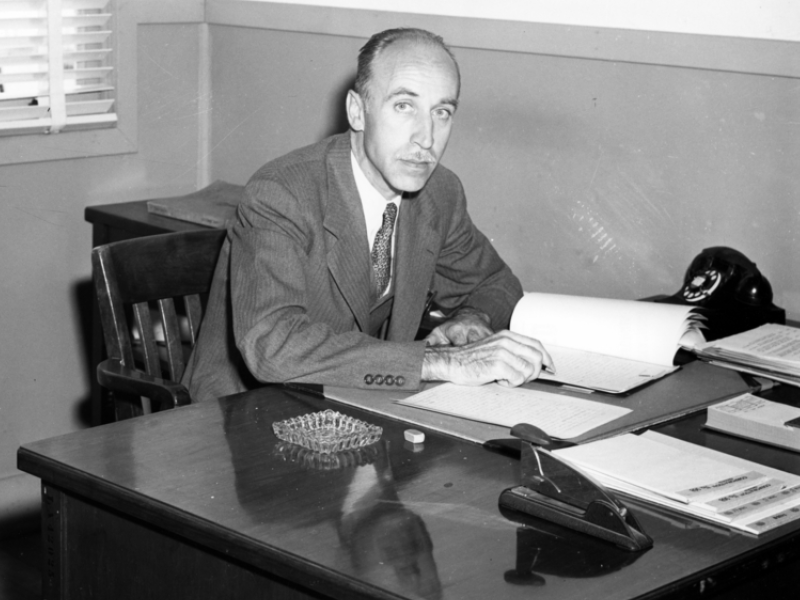
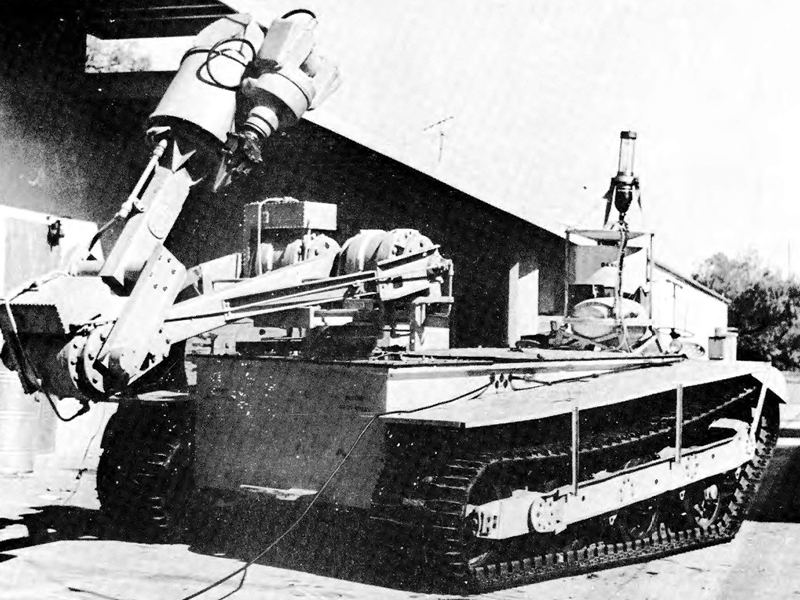
1950s
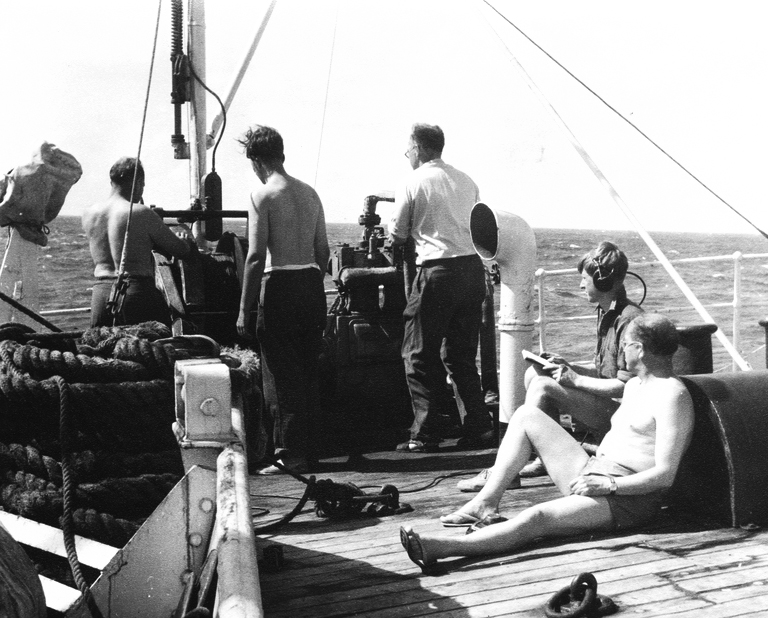
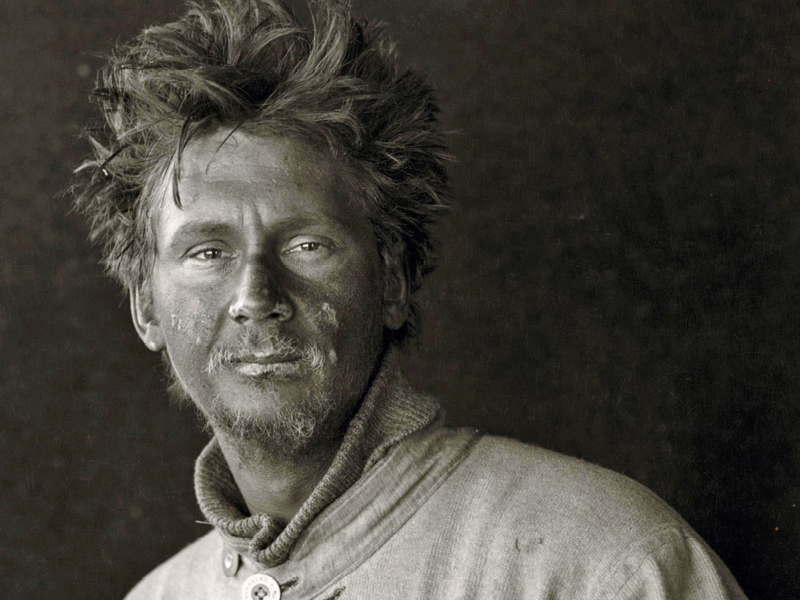
After less than two years as MPL Director, Eckart’s attention was spread further abroad as he took on the directorship of Scripps Institution of Oceanography from 1948 to 1950. During that period he shifted MPL from the direct administration of the UC headquarters to a division of SIO, as it has remained ever since. In 1952 Eckart left for a sabbatical year at the Institute for Advanced Study at Princeton University. Upon his return to Scripps he decided not to continue as MPL director and was replaced by Sir Charles Wright, who had retired to Canada after a career that included directorship of the Royal Navy Scientific Service. After serving from 1952 to 1955 Sir Charles retired and was replaced by Alfred B. Focke, a Navy Electronics Laboratory group leader and chief scientist for the nuclear depth-charge test, Operation Wigwam. In 1957 Focke moved on to be chief scientist at Point Mugu Naval Missile Test Center. Dr. Fred N. Spiess was appointed director in 1958. At that time, also, primary sponsorship of MPL was transferred from the Navy’s Bureau of Ships to the Office of Naval Research (ONR) and the supporting research equipment that had been provided by the Navy Electronics Laboratory was transferred to the university.
MPL’s scientific and engineering staff grew during the 1950s, but primarily through strengthening the initial threads. George Shor joined Raitt’s group and through successive expeditions they developed seismic refraction capabilities to map the structure of the crust beneath the deep ocean. The results generated a picture of the Pacific Basin that showed a crust much thinner than that of the continents and revealed the surprising fact that the quantity of sediment expected from millennia of continental erosion was not there. This was one of the phenomena that forced the acceptance of the plate tectonics concept, explaining that as old crust was subducted at plate boundaries, the accumulated sediment was cycled onto and underneath the overriding plates.
On the signal-processing front, theoretical concepts quickly outran hardware capabilities of the analog world and vacuum-tube computers. At MPL there were imaginative efforts to build new devices, particularly by Philip Rudnick and Victor C. Anderson, a group leader who had been a MPL graduate student. Anderson was quick to see the opening provided by representing the sonar signal by a close-spaced series of polarity samples, resulting in the beginnings of digital-signal processing—a major advance that provided the base for experimental sonar installations, soon put to use in Navy operational systems. The first of these was the delay line time compressor, a system in which a simple digitized version of an acoustic signal could be repetitively and rapidly played back as the basis for making fine-scale correlation or frequency analyses over wide bands in real time. The second was digital multibeam steering with which the outputs from an array of independent sound receivers (hydrophones) could be combined to provide simultaneous parallel outputs focused in many different spatial directions. These techniques led to rethinking of the nature of submarine sonar systems.
While these two main lines of investigation were the primary concerns, there were others leading to the gradual broadening of the scope of MPL’s activities to other aspects of experimental physics at sea and in the laboratory. Fred Fisher, who completed his University of Washington thesis with work he conducted at MPL, expanded Leonard Liebermann’s work on sound absorption: Spiess devised and demonstrated a submarine tactical communication system and collaborated with UCLA scientists in a program of measuring gravity at sea; Liebermann developed and applied a new technique for measuring fine-scale inhomogeneities in the ocean; and Rudnick collaborated with other SIO scientists investigating radio-wave propagation in the ocean.
One non-acoustic effort began with Sir Charles’s interest in geomagnetism. On the 1952 Capricorn Expedition, Ron Mason had used a ship-towed magnetometer adapted from a World War II airborne system by Jeff Frautschy and others at Scripps. Sir Charles was aware that the U.S. Coast and Geodetic Survey was being tasked to make a dense seafloor topographic survey off the West Coast of the United States and helped arrange it so that Mason could tow the magnetometer from the survey ship and that MPL would provide the necessary engineering support, which was led by Arthur Raff who had previously been part of Russell Raitt’s group. The result was the famous magnetic anomaly map demonstrating the existence of bands of anomalously high and low magnetization having continuity over hundreds of miles—the fundamental building blocks of seafloor spreading and its successor plate tectonics. Subsequently, Victor Vacquier, who had devised the airborne flux gate magnetometer joined MPL and, refining the more robust proton precession magnetometer approach, expanded MPL’s seagoing geomagnetic research program.
One other activity of importance was the involvement of senior staff members (particularly Spiess and Anderson) in various Navy research advisory committees and workshops that were instituted to maintain fruitful interactions between the science and Navy operational communities. This produced numerous dividends in motivating new research directions and generating multi-institution collaborative programs.
1960s
The 1960s saw the fruition of the initial building period. MPL had established a senior scientific group of nine (Anderson, Raitt, Shor, Fisher, Liebermann, Spiess, Rudnick, Vacquier, and Eckart), along with a strong engineering staff and an administrative structure that could support major equipment construction and seagoing operations. ONR remained the primary source of support, augmented by other Navy programs. There were fruitful collaborations both ashore and at sea with others at Scripps.
MPL continued to emphasize two essential elements: innovations typical of experimental physics, and seagoing action to learn about the real ocean and the crust beneath it. Some of the principal devices that emerged were:
- R/P FLIP, an easily deployable manned spar buoy laboratory,
- RUM, a manipulator-equipped remotely operated seafloor tractor,
- ORB, a support barge from which systems such as RUM could be operated,
- Deep Tow, a deep seafloor imaging and mapping system,
- acoustic transponder navigation, and
- Albacore DIMUS, a 256-hydrophone receiving array with a processor generating a comparable number of focused outputs installed in an experimental U.S. submarine.
While the decade of the 1960s was a golden era for oceanographic facility development, at the same time there were changes in the surrounding environment. The University of California began building a general campus adjacent to SIO. Liebermann and Eckart moved into the new Physics Department, Eckart became a vice chancellor and Anderson began to play a role in electrical engineering, particularly in acoustics. Spiess served as director of Scripps and then as an associate director.
As opportunities to use these new tools appeared, adventurous graduate students joined in, becoming a larger component of the laboratory’s program. Although the senior staff did not grow significantly during this period, there were visiting scientists who joined MPL for periods of up to several years, including the beginning of a sequence of postdoctoral appointees, mostly from Cambridge University.
Most of these technological advances were carried out in the early 1960s and scientific and engineering results flowed even from their initial trial operations. Deep Tow data contributed to the evidence supporting the emerging plate tectonics concept; FLIP supported sound propagation studies and initial internal wave investigations.
Continuing to build on earlier work, Anderson led the signal processing component of Project Artemis, a major multi-laboratory program to investigate the possibilities of ocean basin-scale active sonar systems for submarine detection. He also led a program of installation and testing of the DIMUS concept on a number of Navy ships and submarines. Fisher and Spiess developed programs to understand the distortions that acoustic signals are subjected to as they travel through the water and interact with the seafloor. Vacquier added seafloor heat-flow measurement capability to his already active geomagnetic seagoing activities, while Raitt and Shor improved seismic reflection and refraction techniques.

1970s
Such evolution continued in the 1970s. After 25 years, MPL was changing in many ways. With the development of marine geophysics based on Russell Raitt and George Shor’s seismic methods, the Spiess Deep Tow system and Vacquier’s group’s geomagnetic and heat flow interests, the National Science Foundation became a major element in the laboratory’s support. Most important, a second generation of senior staff members emerged.
There was further diversification growing out of these new capabilities and expanding the nature of existing activities. Rob Pinkel completed his Ph.D. using FLIP as a base for studying internal waves and joined the staff, introducing a physical oceanography component. This program quickly drew on acoustic technology as Pinkel developed a FLIP-mounted Doppler sonar approach to observing the dynamics of the upper ocean, finding a much more complex environment than could be seen with prior instrumentation.
Peter Lonsdale, after completing his degree using the Deep Tow system to study seafloor morphology, joined the staff, bringing geology into the fold.
The Deep Tow system was very active, averaging about three expeditions per year under the leadership of Fred Spiess, Peter Lonsdale, John Mudie, and Kenneth Macdonald. Activity ranged from searching for lost equipment to manganese-nodule research to the discovery of hydrothermal vents at the crest of the Galapagos Spreading Center. Victor Vacquier’s group continued its geomagnetic investigations while the heat-flow portion of his group, augmented during this period by John Sclater, documented spatial variations in the heat-flow field in relation to seafloor spreading.
FLIP was used by Fred Fisher’s group and Gerald Morris for a variety of underwater acoustic investigations documenting the nature of the ambient noise field and various propagation phenomena. Special tools were developed from these studies, including vertical arrays of hydrophones that could be positioned at interesting depths throughout the water column, and a 48-element array mounted on the bottom (aft) end of FLIP. The 48-element array was only one of the several DIMUS-based research arrays built by Victor Anderson’s group. Two larger systems were assembled, each in its own submersible barge-like structure operating suspended below ORB to provide high-angular-resolution observations of scattering and ambient noise as well as exploring the limits on array size. William Hodgkiss was recruited in the signal processing arena, creating a more physics-oriented perspective to complement Anderson’s hardware orientation and Hodgkiss began to be involved with the FLIP-based acoustics program.
The DIMUS program at MPL culminated in the ADA (Acoustic Distribution Array) that was used to study the spatial and temporal statistics of background noise in the ocean. ADA was a very large array, 75 by 30 feet. The platform was like a barge. It was towed to sea behind the surface platform ORB and lowered on an electrical strain cable down to depths as great as 3000 feet. Mounted on the deck in a spatially tapered distribution were 720 hydrophone elements. The processing electronics and platform control circuits were enclosed in a walk-in pressure charrlber, 60 feet long and 6 feet in diameter, designed to withstand the hydrostatic pressure at a depth of 3000 feet. This was the largest and most complex DIMUS system that we ever built. The 720 input channels were transformed into 1500 beams. The distribution of the beams was fully programmable over the umbilical cable, and the orientation of the beam set was electronically stabilized in both azimuth and elevation by reference to an on-board gyro. Completion of the ADA project marked completion of MPL's DIMUS program. By this time we had used DIMUS processing extensively in our ambient-noise research, and had seen it accepted into the operational Navy's submarine sonar suites.
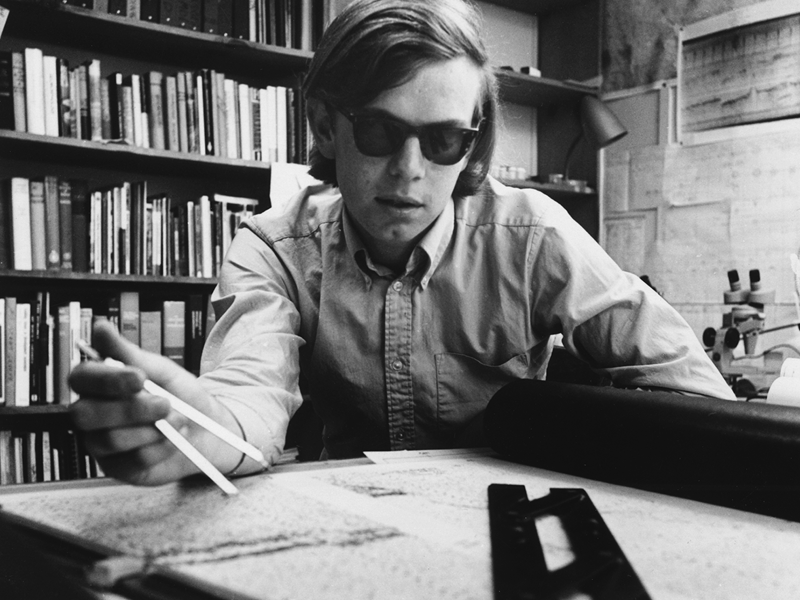
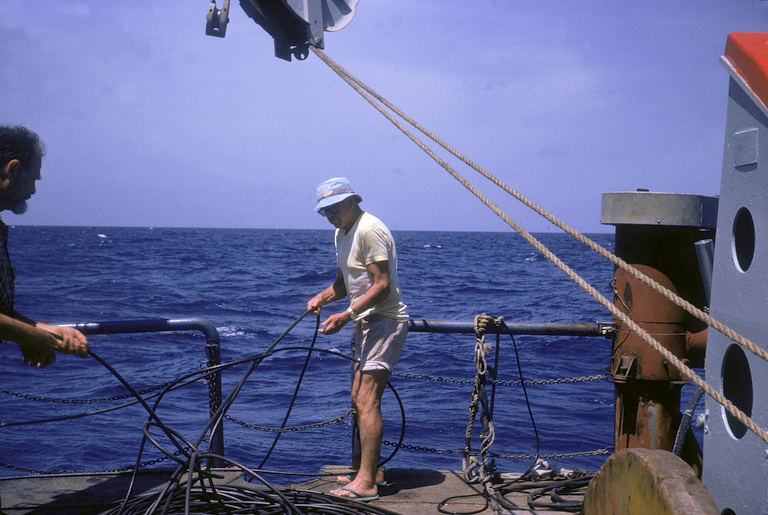
1980s
Kenneth Watson, with a background in plasma physics and scattering theory was named director of MPL in 1981. At this time a significant portion of MPL support came from Navy block funding (MPL was then considered one of four so-called “Navy-University Laboratories”). This and other current funding sources were recognized as inadequate to sustain the MPL research programs. Also, the hiring of new, young staff was seen as of high priority. In timely response to these needs, the ONR in 1981 began granting an annual Director’s Discretionary Fund to MPL. This provided valuable “seed money” for hiring new staff and starting new research programs.
In the following years MPL recruited several new members of the research staff. This included John Hildebrand, Jules Jaffe, Andrew Dickson, Jerome Smith, Spahr Webb, Gerald D’Spain, and Christian deMoustier. At the more senior level of appointments were those of Mike Buckingham and Ken Melville. Split appointments with other divisions of SIO became common. MPL funding became more diversified as these new appointees received contracts and grants.
During the mid-1980’s Charles Bishop managed a program to assist with engineering and maintenance of the Navy Deep Submergence research submarines. These submarines were used by Peter Lonsdale and John Hildebrand in their geophysics and gravity anomaly research.
A very high resolution acoustic array was completed under Hildebrand’s direction. This array was extensively deployed in Navy programs during the 1980’s.
The Mt. Soledad facility was opened in the mid-1980s by Andrew Dickson as a laboratory for studying chemical processes in the oceans.
The Visibility Laboratory, a division of SIO, was terminated in the late 1980s. At this time, MPL annexed the Remote Sensing Group, which had been a part of the Visibility Laboratory.
Throughout this period the Deep Tow group, directed by Fred Spiess, continued the development of acoustic and optical sensors and the use of these for geophysical research. The group directed by Rob Pinkel made major improvements to Doppler sonar technology and applied these to the study of internal waves and upper ocean turbulence. Laboratory and in situ studies of upper ocean and surface wave phenomena were made by Jerry Smith and Ken Melville. Innovative acoustic imaging techniques were developed by Jules Jaffe and Mike Buckingham.
